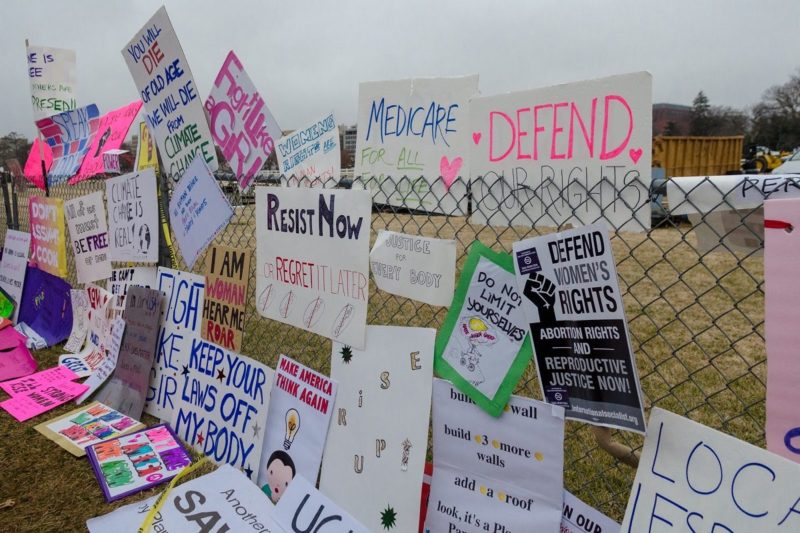Protecting Rights in a Post-‘Roe’ World: More ‘Freedom of Choice Acts’ and Strong Coalitions
The political red tape that has crisscrossed itself around abortion rights in recent years demands an equally heavy analysis and response.

Advocates, take note: The Center for Reproductive Rights (CRR) has released a report examining the legal and legislative ramifications—state by state—of a potential Roe v. Wade reversal. More than a statistical analysis, What If Roe Fell? is a guide for navigating anti-choice maneuvers and fortifying abortion rights in the current climate.
As the report—an updated version of the 2007 study—makes perfectly clear, we can no longer rely on Roe to protect our right to abortion care.
Indeed, based on the report’s findings, in 22 states, the right to abortion is at the highest risk of loss—these states could ban abortion outright if Roe fell. In 11 states (plus the District of Columbia), the right to abortion is at risk of loss, and in 17 states, the right to abortion appears secure. These findings show that a woman’s zip code and income would heavily influence her ability to legally (and safely) obtain an abortion.
In order to calculate a state’s risk of criminalizing abortion post-Roe, the center’s analysts considered five key factors: the existence of pre-Roe bans (and bans-in-waiting) that haven’t been blocked by courts; abortion bans that are on the books, but have been blocked; the political composition of a state’s legislature; any explicit protections for abortion rights in a state’s constitution that would survive a Roe reversal; and statutes that strongly protect the right to abortion.
Further, as the 2007 report noted, anti-choice advocates have adopted a three-pronged legislative approach to curtailing abortion rights: pushing immediate abortion bans, bans-in-waiting (bans that go into effect once Roe is overturned), and pre-Roe bans. Of the three, the bans-in-waiting are particularly insidious, as they require no legal action to spring into effect; they would become the law of the land the instant (or very soon after) Roe is overturned.
In other words, it’s complex—and rightly so. The political red tape that has crisscrossed itself around abortion rights in recent years demands an equally heavy analysis and response.
With President Trump at the helm of a GOP-controlled Congress, our reproductive rights seem to be vanishing before our very eyes. One of Trump’s first acts as president was to reinstate—and expand—the “global gag rule,” and his cohorts in the House passed HR 7, a bill targeting health insurance coverage of abortion, shortly thereafter. Republicans are also pushing a “personhood” bill as well as a total abortion ban.
The promise of Roe hangs more delicately in the balance than ever before—especially for low-income women, who, as CRR explained, “often struggle just to secure the resources to pay for an abortion and will likely have difficulty affording travel to a state where abortion remains legal.”
There’s no denying that the state of abortion rights seems dire—but it’s not hopeless. CRR’s 2007 report outlined several ways lawmakers can proactively protect our right to choose, and those tactics still hold today, explained CRR.
For starters, the center recommended pro-choice legislators enact “Freedom of Choice Acts” (FOCAs) at both the federal and state levels. These protect erosions of reproductive freedom while also guaranteeing the right to abortion, should Roe fall. Several states—California, Connecticut, Hawaii, Maine, Maryland, Nevada, and Washington—have already enacted FOCAs, and lawmakers in other states are introducing similar measures.
“Just last week, Virginia legislators introduced the Whole Woman’s Health Act, which would enshrine the fundamental right to obtain an abortion into state law and repeal restrictions that impede access to abortion in the state,” Amanda Allen, senior state legislative counsel at the Center for Reproductive Rights, told Rewire on Wednesday.
Other pro-choice legislative avenues include repealing pre-Roe laws banning abortion and monitoring constitutional developments. In states with constitutions that may protect abortion, advocates can work to ensure their highest state court judges strongly oppose any attempts to amend their constitutions in ways that would undermine the right to privacy.
And, as the saying goes, “the early bird gets the worm.” In other words, legal advocates should start preparing now to block the passage of new state-level abortion bans. How? Build coalitions and collect data demonstrating the devastation wrought by abortion bans. Although the report cautioned that full blockages may not be likely in many cases, advocates “may be successful in reducing the severity of the language of the ban by, for example, attaching amendments with broad exceptions.”
Of course, it’s not just legal advocates who can help keep the promise of Roe intact. As I wrote in a previous Rewire article, activists have a large role to play as well, from staying informed, to shouting your abortion story, to helping fund abortions, to ratcheting up pressure on legislators.
“Grassroots activists should pressure their elected officials to introduce legislation that would protect abortion rights in their state,” Allen said. “And thank your state and federal representatives when they stand strong against further restrictions on the right to abortion—it’s important to let them know they have the support of their pro-choice constituency.”
CORRECTION: The article has been updated to clarify the 2017 data.

